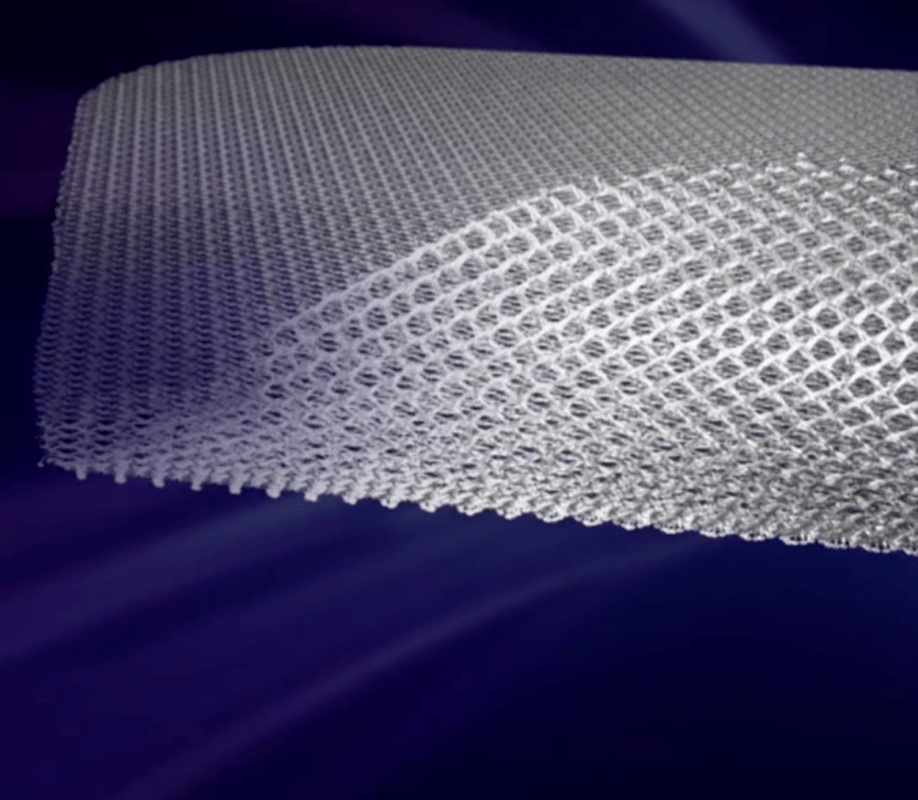Let’s talk meshes
Recent advancements in material technology make hernia meshes safer and more effective.
Facing a hernia repair can feel daunting. In addition to the stress of a surgery, there is some buzz in the media about the dangers of different mesh materials. I always approach my practice as a partnership, where patients have as much say as I do in deciding the best path forward. In that spirit, I wanted to share my point of view on the different meshes available, and why I’m so excited about the latest development in bioabsorbable materials for meshes.
How meshes work
The most simple way to describe how surgeons use hernia meshes is to compare it to a bicycle tire patch: There’s a hole that needs addressing, and meshes affix to the edges to restore and preserve your optimal function. Once they are safely and carefully put in place, meshes strengthen the wall of your abdomen, distributing tension over a larger space and decreasing the chance of recurrence of your hernia.
Different kinds of meshes
There are three general types of meshes: Synthetic non-absorbable, animal-derived absorbable, and lab-made resorbable.
- Synthetic non-absorbable meshes are typically made of polypropylene, polyester and/or ePTFE. They are strong and long-lasting, and were the go-to for many decades.
- Animal-derived absorbable meshes (biologic meshes) were developed because some synthetic meshes led to complications, plus surgeons were looking for durable materials that had less of a synthetic footprint. Absorbable meshes made of collagen from pig or cow tissues provide support to an area and will be absorbed and lose strength over time, so tends to be used in situations where new tissue growth is expected to replace the mesh, providing the strength to prevent a hernia’s return.
- And this brings us to what I think is the most exciting development to date: lab-made resorbable meshes (bioabsorbable meshes). While lab-made out of biological materials, these meshes are designed to slowly degrade over time, while reinforcing the native tissues during the most important time of healing.
These meshes degrade into natural components, offering a remarkable level of strength and longevity. In other words, these meshes, in my opinion, might be the best of both worlds when used in carefully selected patients. And the research for these materials is just picking up steam — I have been using a new repair mesh for over a year, and am extremely impressed with the results to date.
Why do I see hernia mesh lawsuits in the press?
No doctor is ever going to guarantee a 100% risk-free procedure, and hernia repair surgery is one where extra care must be taken. However, you may have seen law firm advertising regarding mesh lawsuits. A little information regarding those:
- “Mesh” is a generic term, and encompasses the use of many different meshes, made of different materials, for different conditions. A good percentage of mesh lawsuits are related to the use of mesh in fixing postpartum incontinence.
- And while there certainly are cases regarding mesh usage in hernia, many are related to the technique used rather than the mesh products themselves. Ideally, a hernia will only be repaired once, with a repair durable for life. Therefore, what matters most in my opinion is by whom and how the first hernia repair is performed.
- Some meshes have been recalled by the FDA, and a reputable, quality surgeon will be aware of those and act accordingly.
My take on the lawsuits: I understand how concerning it can be for you to see these types of ads. So I make sure I have direct, honest conversations with my patients so that you understand the different mesh options you have as well as the techniques and best practices that I use. And I will always make sure you feel as comfortable and confident as possible if you choose to move forward with using a mesh product in your hernia repair.
Choosing the path forward, together
When you’re working with your doctor to decide on the right hernia repair for you, it’s important to understand the risks, but also the clear benefits that different choices offer. I always ensure that each of my patients have a personalized recommendation from me, and consider both my deep experience with hernia repair as well as each individual’s lifestyle, condition and wishes for the future. My entire staff has received cutting-edge training as well as being extremely invested in and aware of new developments in our field. Together with you, we’ll weigh the risks and rewards of different procedures, and find the best possible treatment option, together.

